Singapore’s watch microbrands keep ticking amid a global slowdown
Tariffs, export dips and cautious buyers are testing local watchmakers – but creativity and community fuel their resilience

[SINGAPORE] They sell only a few hundred watches a month – sometimes less. Many of these makers are one or two-person outfits run by Singapore designers, engineers and architects in their spare hours. Yet together, they’ve built one of the world’s most active independent watch communities, sending their creations to Europe, Canada and the US while keeping their roots firmly local.
In a business dominated by Rolex, Swatch Group and Richemont, Singapore’s microbrand founders are proving that small can be nimble and profitable. Even as global conditions turn tough – with US tariffs, geopolitical tensions and softening demand for luxury goods – they’re doubling down on design, storytelling and community to keep their businesses ticking.
“Singapore has a strong international reputation, and most of the Singapore microbrands deliver the goods – so they’ve earned the trust of watch lovers globally,” says Ivan Chua, founder of the nine-year-old brand Vario, which sells about 2,000 units annually.
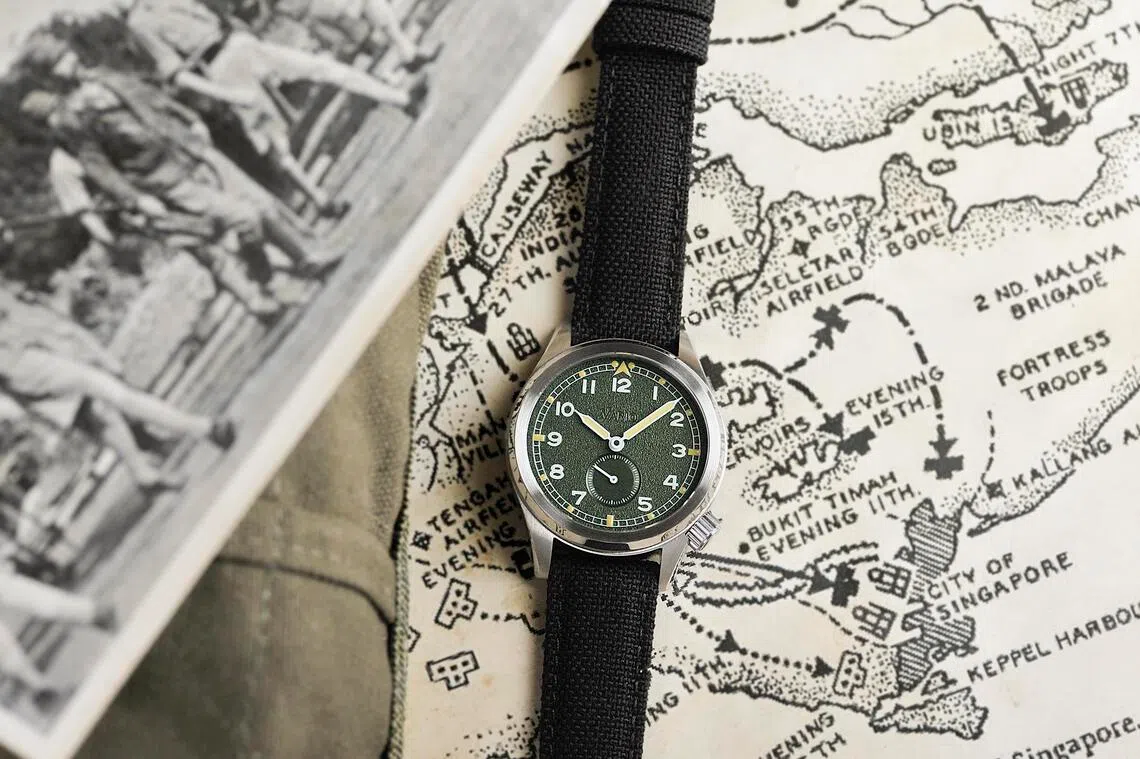
Lim Yong Keong, who runs Feynman Timekeepers, agrees. “Singapore microbrands are trustworthy. If you buy a Singapore watch online from anywhere in the world, you can rest assured you’ll get it,” he says.
Thanks to that reliability – and a reputation for strong design and customer service – homegrown labels such as Zelos, RZE, Boldr, Vario, Azimuth, Gruppo Gamma, Arcturus, Horizon, Feynman and Ubiq are quietly feeding a global appetite for small-batch watchmaking. Together, they’re turning Singapore into an unlikely hub for independent watchmaking.
Global headwinds
But the global watch industry is hitting a rough patch. Swiss watch exports fell 5.7 per cent on the year by volume in the first half of 2025, dropping to just under seven million units (about 420,000 fewer units), according to the Federation of the Swiss Watch Industry. The slide deepened in August, when exports plunged 16.5 per cent year on year by value.
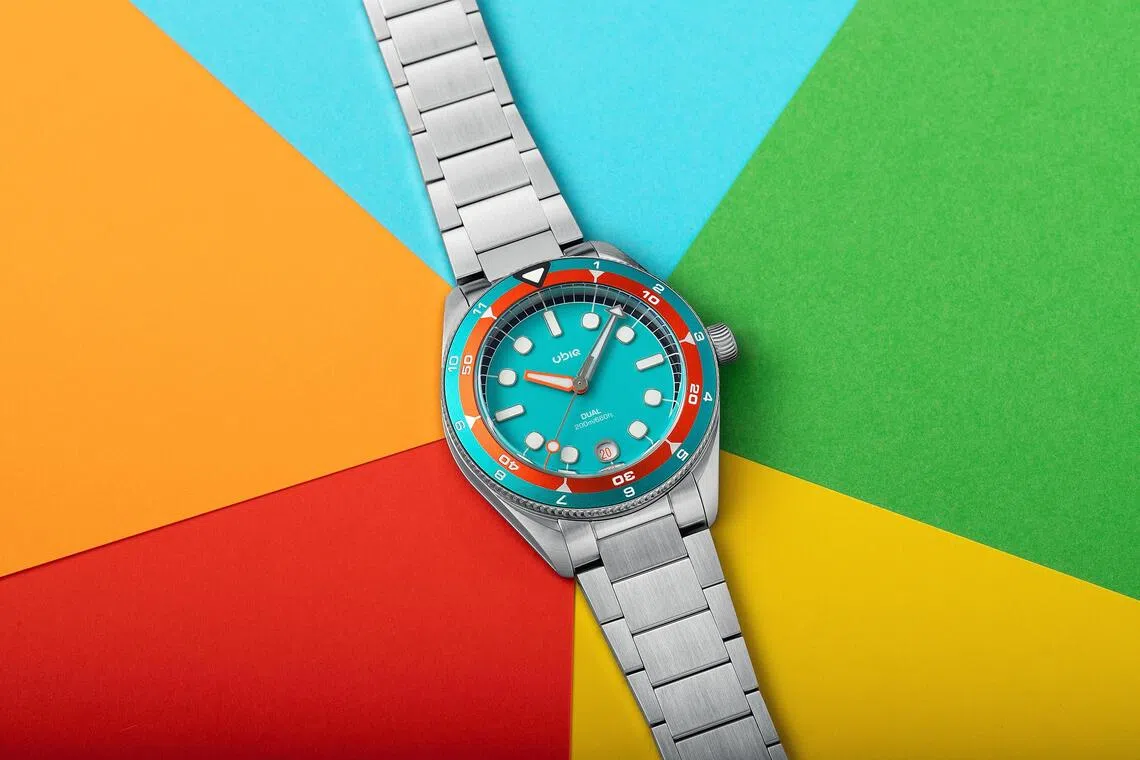
Weaker demand reflects a broader slowdown in luxury spending as the post-pandemic rebound fades. Exports to China slumped 36 per cent, while shipments to the US – still the world’s biggest watch market for most brands – fell 24 per cent after President Donald Trump imposed a 39 per cent tariff on Swiss-made timepieces.
That pain is now trickling down to Singapore’s microbrand scene, where most makers run on tight production cycles and depend heavily on imported components.
Elshan Tang, founder of Zelos, one of Singapore’s first and longest-running microbrands, says he’s decided to absorb the new US tariffs rather than pass the cost to buyers. To protect margins, he’s also kept production lean – releasing smaller, faster batches of a few hundred watches each to avoid unsold stock.
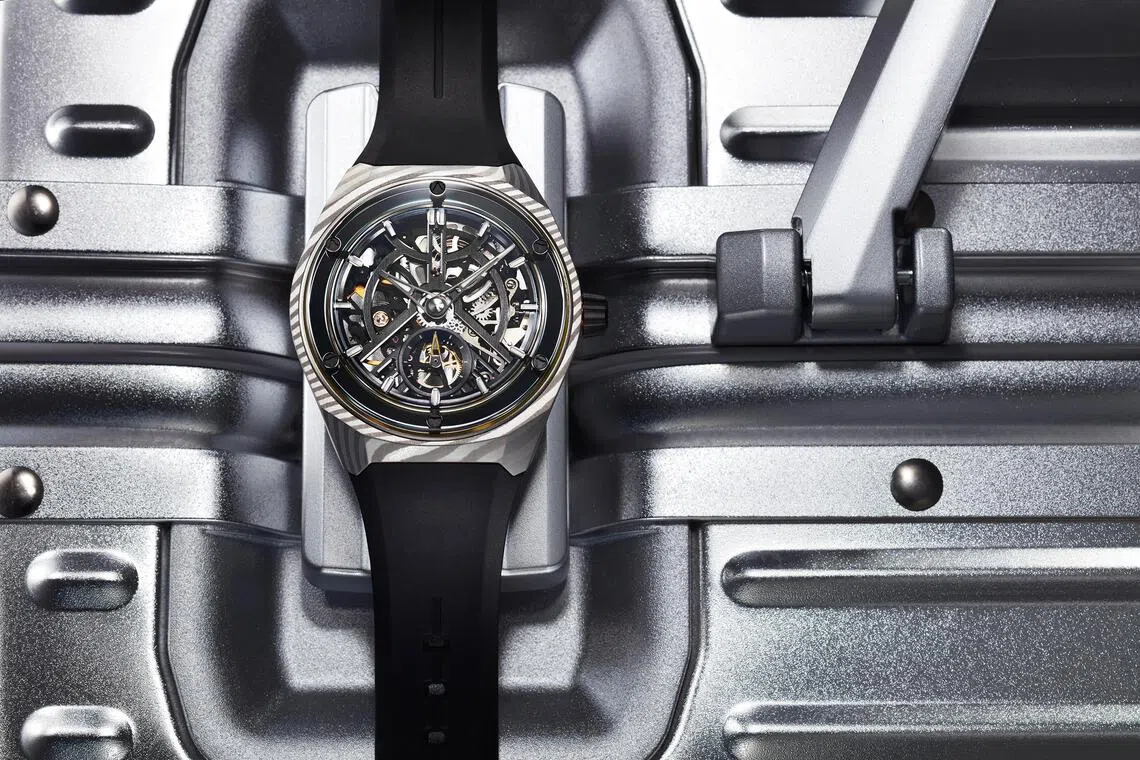
“The United States is our most important market, and raising prices won’t sit well with customers,” he says. “By keeping things nimble, we can ride out softer demand – and still aim for around 10 to 15 per cent growth this year.”
Riding out the slowdown
RZE, one of Singapore’s fastest-growing microbrands, has doubled down on its direct-to-consumer model – now responsible for more than 90 per cent of its sales – while expanding into Europe and the Middle East.
Co-founder Huiy Tang says the strategy in a softer market is straightforward: earn trust and keep it. The brand offers a lifetime warranty for its movements and a trade-in programme that lets customers return any watch, in any condition, for credit – a move that’s deepened loyalty while reinforcing the brand’s focus on circularity and sustainability.
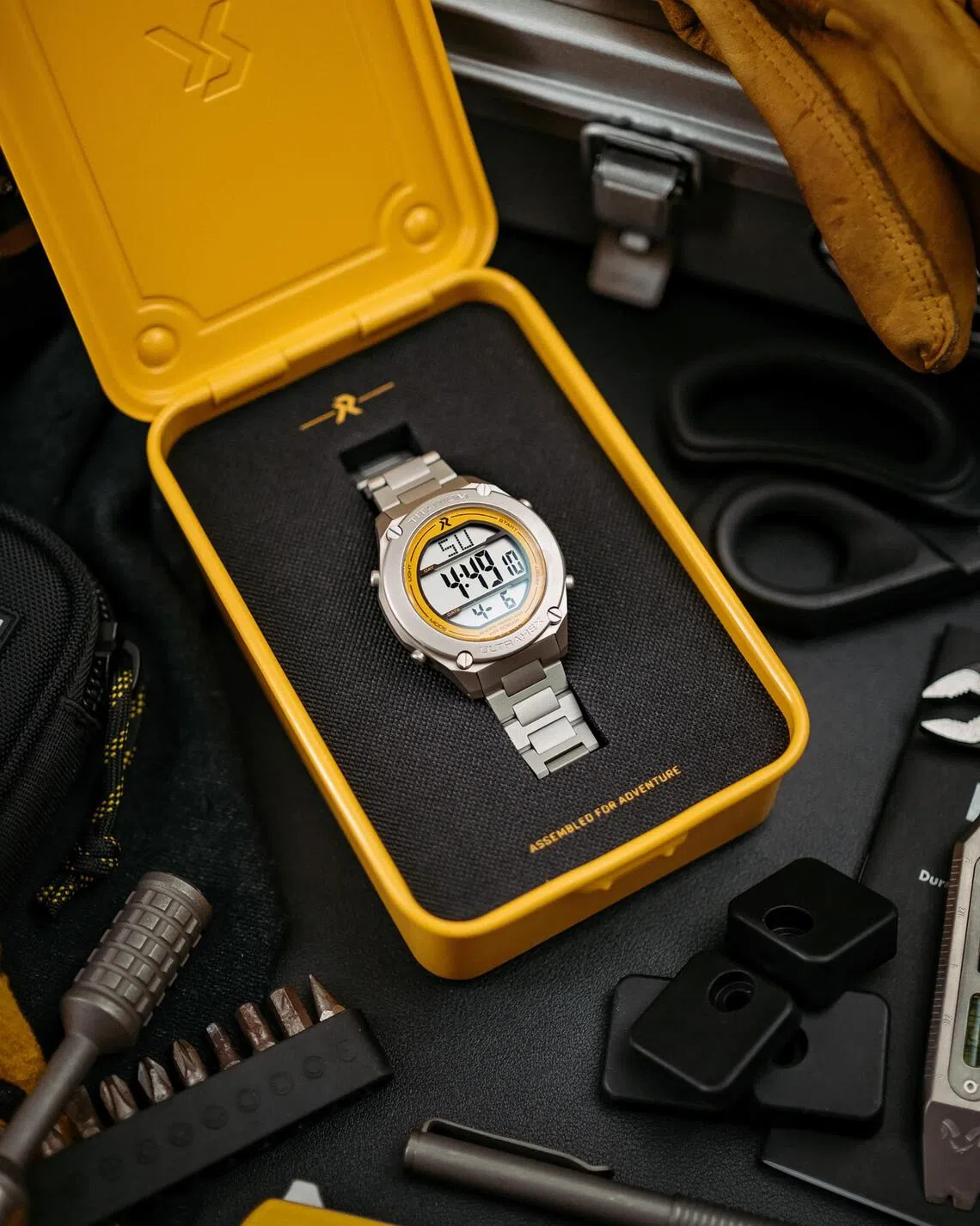
“If we’re to ride out the downswing, we have to continue building trust,” he says. “When someone buys an RZE, we stand behind it for life. It’s our way of honouring the watches already out there and the people who believed in us early on. We’re not just pushing new releases – we’re trying to build a lasting legacy of creating durable watches.”
For newer players, the impact of tariffs and slowing demand hits harder. Drayson Phua, founder of the two-year-old microbrand Ubiq, says every shipment counts. “We ship one watch at a time, so the duties add up,” he says. “With higher tariffs, people naturally hesitate.”
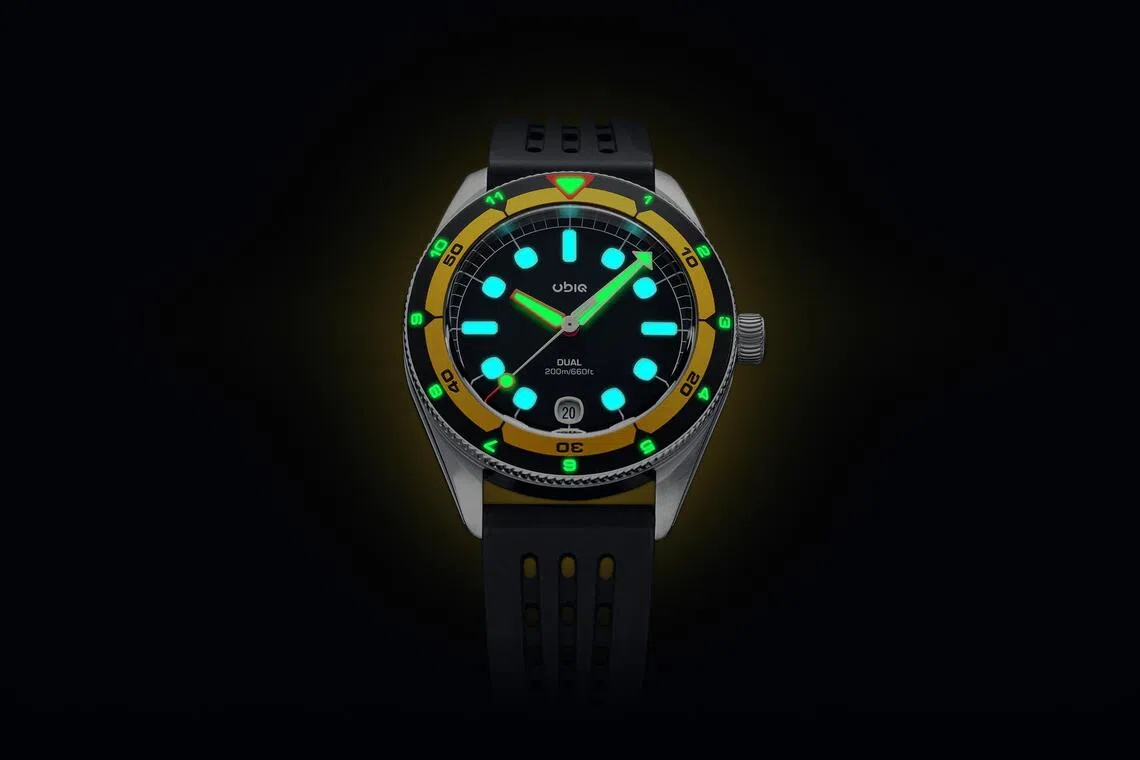
Phua’s response is to stay nimble – design and assemble in Asia, then sell globally through Kickstarter and niche events such as Spring Sprang Sprung, a microbrand fair started in Singapore in 2022.
“We can’t control the global economy, but we can control creativity, design and service,” says Phua, who still works full-time as creative director at That Design Agency.
Crafting identity
What these brands lack in volume, they make up for in personality. Zelos is known for pushing materials to the edge – bronze one year, meteorite or tantalum the next – and works with Swiss movement makers for added cachet.
RZE builds rugged, scratch-resistant titanium tool watches designed to take a beating. Vario trades on early-20th-century nostalgia, with trench numerals, domed crystals and art deco flourishes.
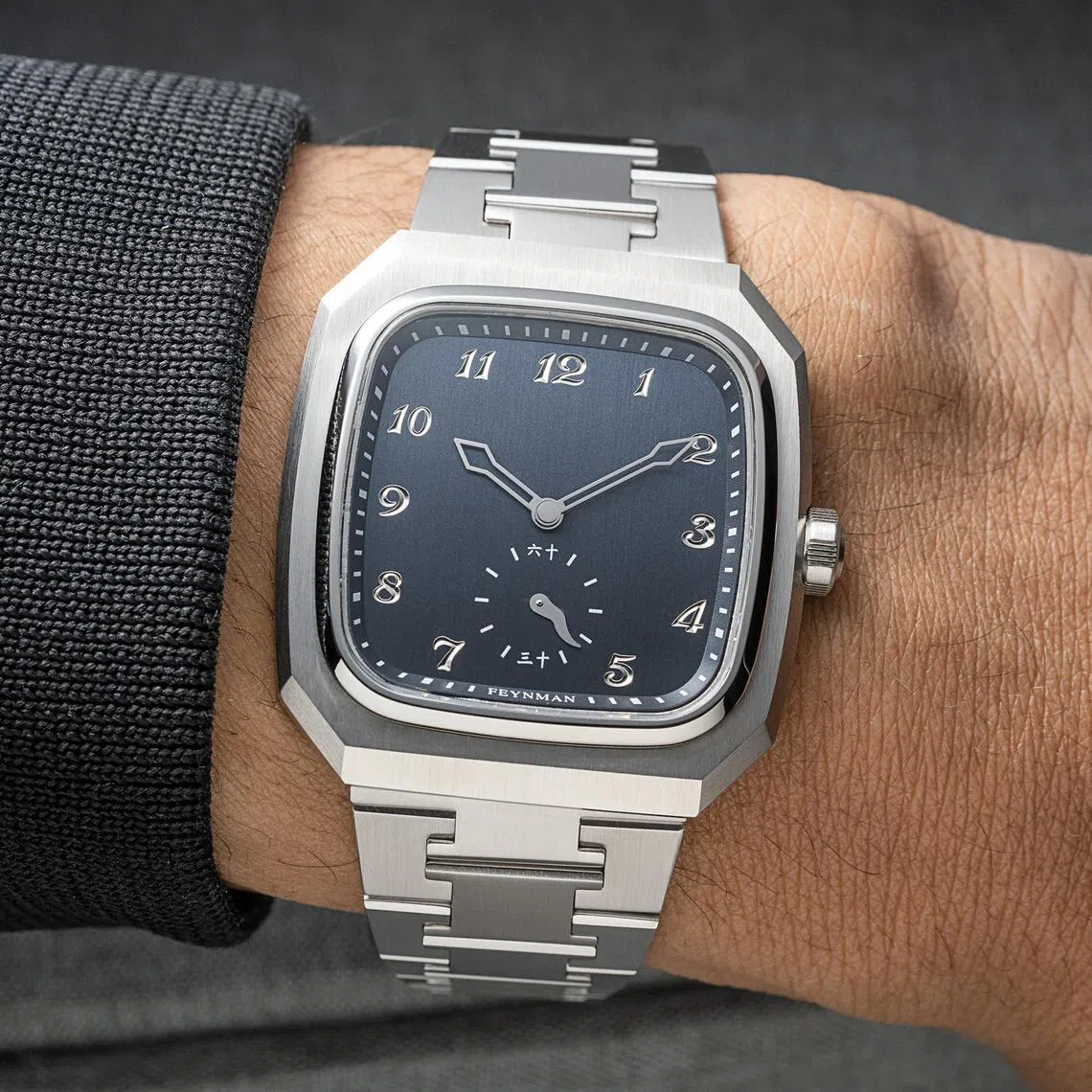
Ubiq plays with colour and emotion, while Feynman leans on cultural references and design-driven storytelling. Together, they show the range of a scene that champions experimentation over mass production.
Most use Japanese or Swiss automatic movements – reliable engines such as the Miyota, Seiko NH35 or Sellita SW200 – to strike a balance between performance and affordable pricing. Cases are typically assembled in Hong Kong, mainland China or Singapore to keep costs in check.
As a result, many pieces are priced between S$300 and S$1,200 – good value for money considering the level of finishing, dependable automatic movements and limited-batch production.
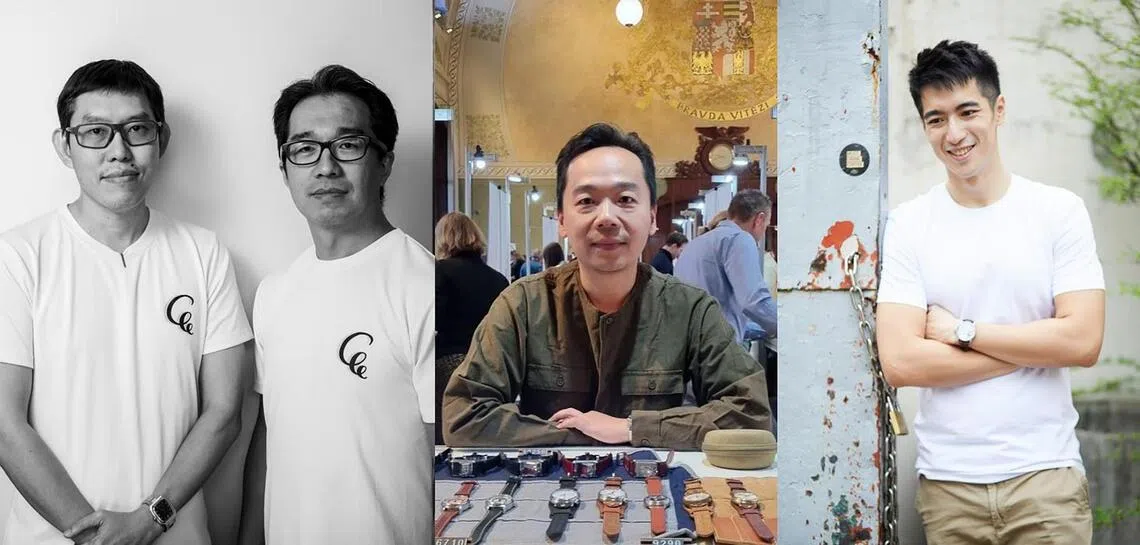
“But the hardest part isn’t production – it’s perception,” says Sugiharto Kusumadi, founder of Red Army Watches store and his own label, Horizon Watches. “People still assume Asian-made means lower quality… Thankfully, that’s gradually changing. Brands like Zelos, Vario and RZE are proving that originality and integrity can come from anywhere.”
Kusumadi adds: “Many of these brands are really passion projects that grew out of our love for design and storytelling – and that’s what makes Singapore’s microbrands special. The fact is, many of us still hold day jobs, but making watches is something we cannot not do.”
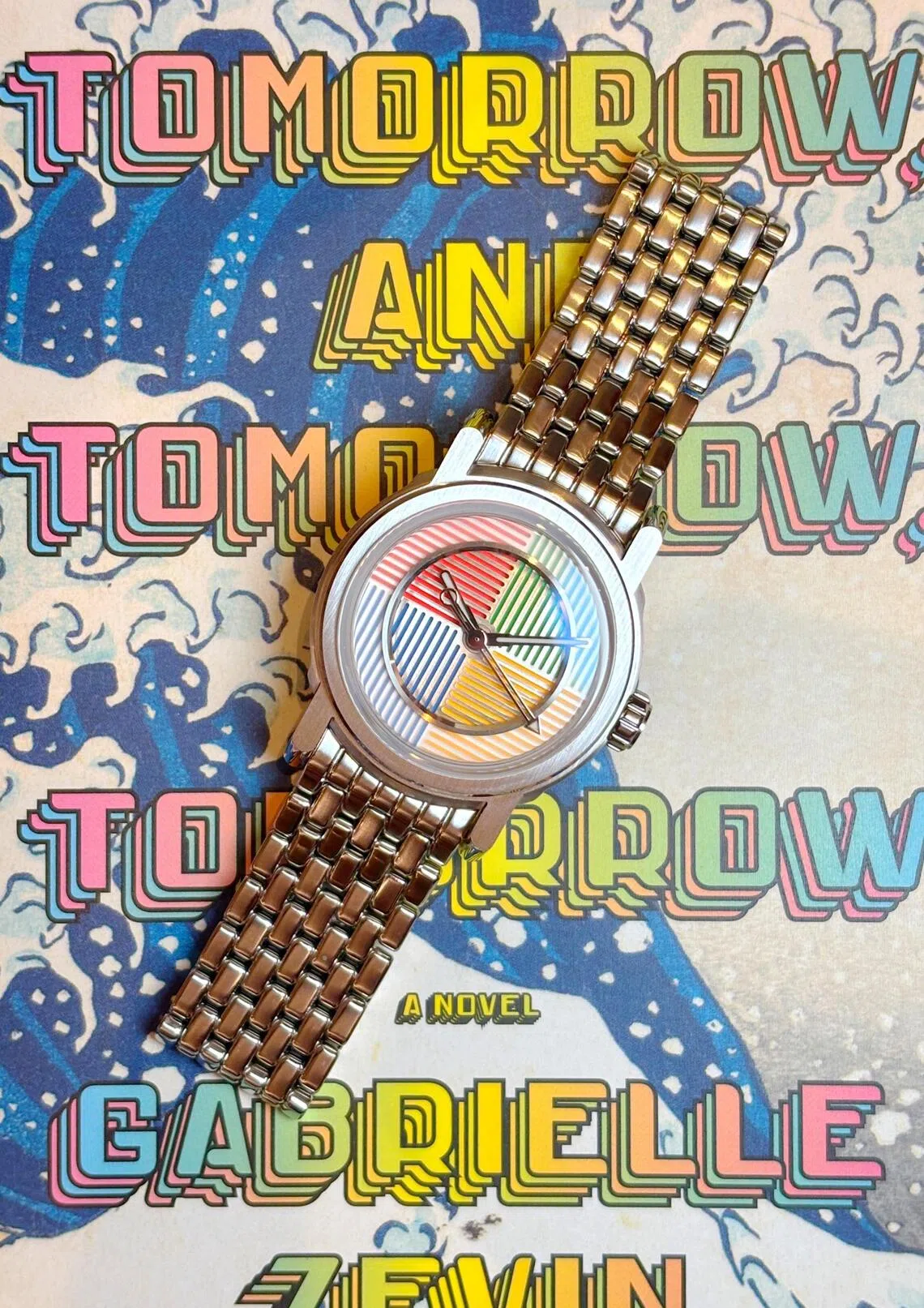
Makers here support each other
But with marketing budgets typically limited or non-existent, Singapore’s watchmakers are leaning on something money can’t buy: community. That’s why Kusumadi, together with Lim of Feynman Timekeepers, co-founded the microbrand watch fair Spring Sprang Sprung, which returns for its fourth edition this November.
Since its debut in 2021, the fair has grown steadily – drawing nearly 3,000 visitors in 2024 and expanding to about 60 brands for its November 2025 edition, a 50 per cent jump from 2023. For small makers, it’s more than a sales platform. It’s where they meet collectors, test ideas, and build visibility that traditional marketing can’t deliver.
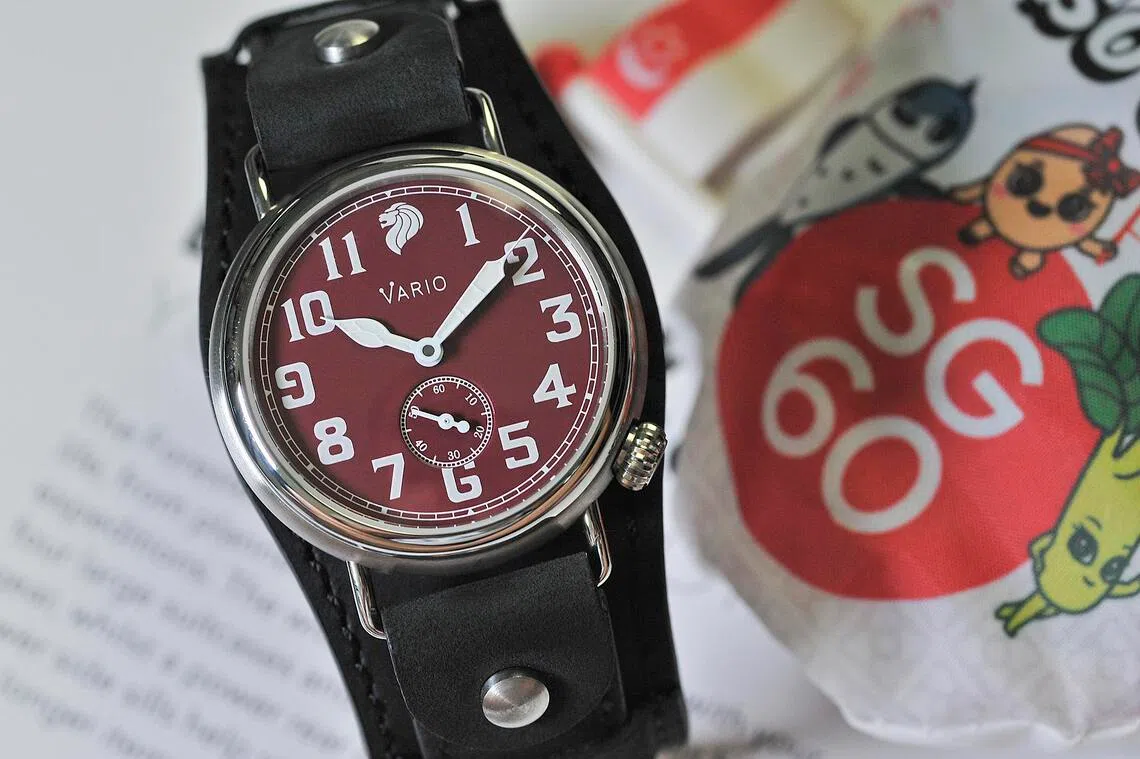
“You have to play an active role in telling your story, meeting people and following up after the fair,” says Lim. “It’s not just about selling watches; it’s about keeping the community alive.”
That sense of cooperation runs deep. “I couldn’t have started Ubiq without the generous spirit of Travis (Tan) from RZE Watches and Ivan from Vario,” says Phua, founder of Ubiq. “They were open, willing to share contacts and advice – and that gave me the confidence to take the leap. Everyone here genuinely wants the others to do well.”
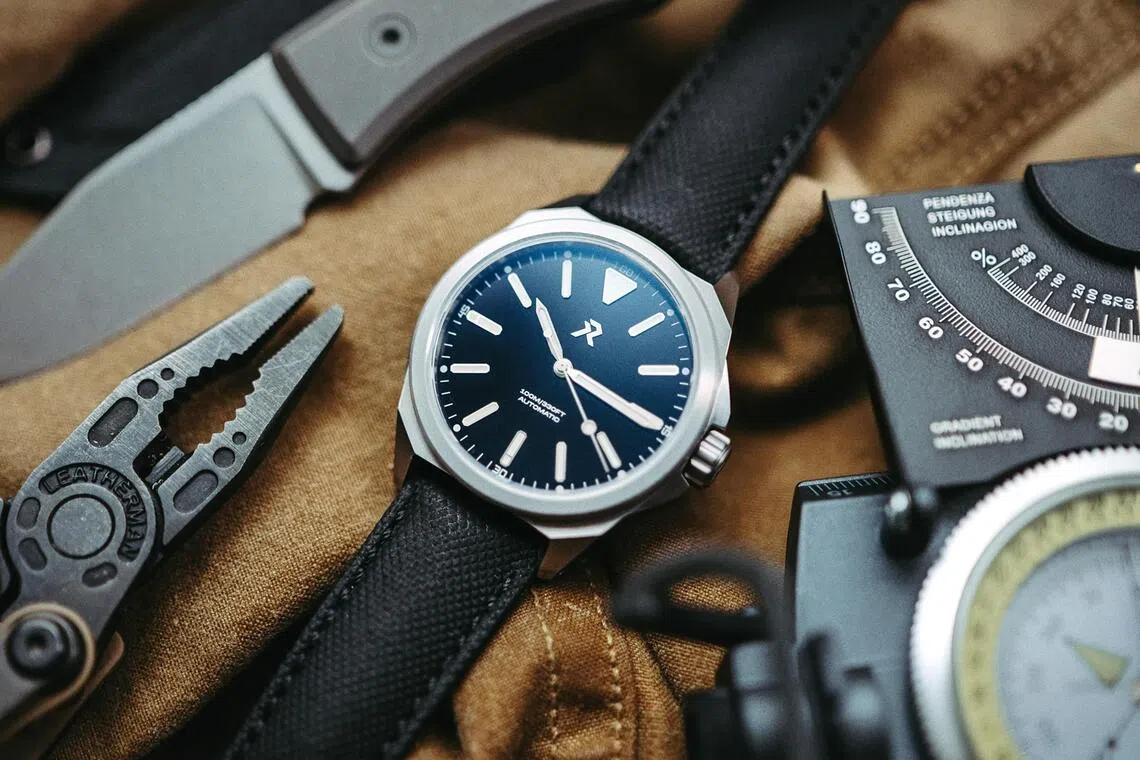
RZE Watches’ co-founder Tang, who is based in Canada, calls it a uniquely Singaporean trait. “There’s this mix of ingenuity and drive – everyone pushes one another to be better,” he says. “It’s competitive, but never cut-throat. No one’s trying to undercut anyone else. We’re all just working to put Singapore on the map for global watch collectors.”
That spirit, he adds, is what will sustain the scene. “If we can hold on for another 20 or 30 years, maybe we’ll have our own legacy brands,” says Tang. “Every legacy brand had to start somewhere.”
Decoding Asia newsletter: your guide to navigating Asia in a new global order. Sign up here to get Decoding Asia newsletter. Delivered to your inbox. Free.
Copyright SPH Media. All rights reserved.



